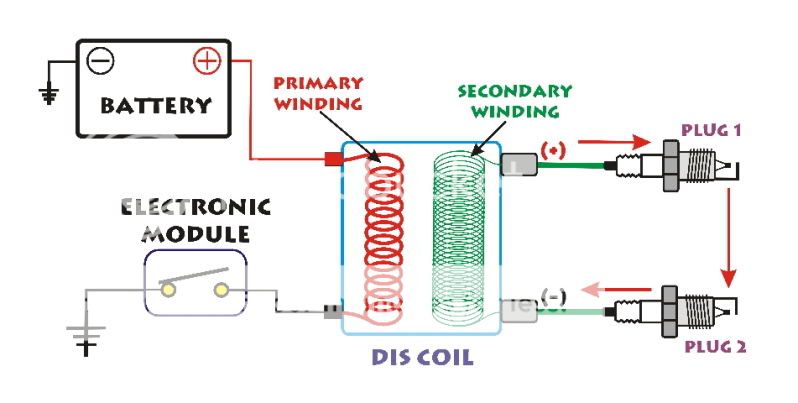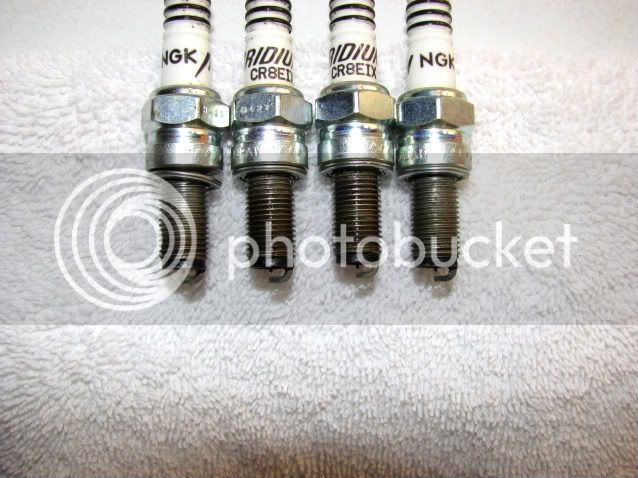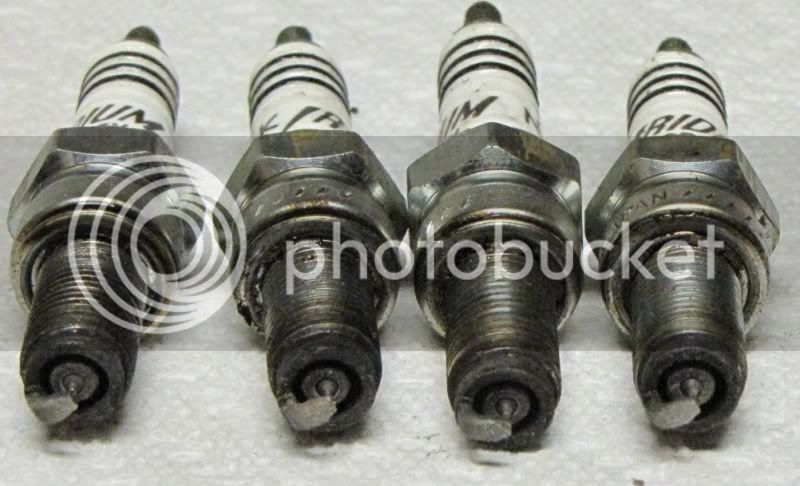SCRider
Well-known member
Great drawing 3dogs! This makes it much simpler to understand. Basically, the head is just a wire to connect the 2 ground (threaded) sides of the plug together and has nothing to do with the chassis ground.Here is a drawing from my motorcycle electrical book. This is easier to read than the wiring diagram from the FJR manual. DIS stands for distributorless ignition system. As you can see there is no ground (battery ground) for either of the spark plugs. The only thing grounded at the battery is the primary winding in the ignition coil. The secondary winding is its own complete circuit The plug's air gap gives the circuit its high resistance (and a place for the spark to form). The cylinder head acts like a giant wire that connects the two plugs electrically. The red arrows shows current flow (yes, I know that it really flows the other way but it's easier to explain going from positive to negative--aka "conventional electron theory") Hope this helps.

Oh, I think he was just being sarcastic, he agrees with you....
QUOTE (Zorlac @ Jun 17 2009, 07:01 PM) *
That can't work, the plug bases aren't "grounded".



































